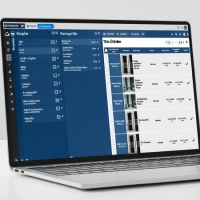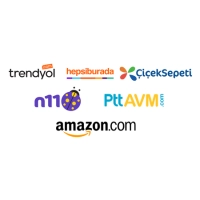
The e-commerce sector is one of those sectors that is constantly growing, and competition is naturally becoming fiercer. Every day, many new companies are entering the sector and are having to compete with companies that have already completed their branding process and are already reaping the rewards of the market. Therefore, if you want to elevate your brand to the top of this league, you must carefully plan your branding dos and don'ts.
What You Need to Do
-
Involve Your Team in the Process
When planning your branding process, you should ensure that your employees, who already live and breathe your brand every day, contribute to the process. You can create a roadmap for your strategy through meetings and workshops, and by listening to your employees' ideas, you can shape the process to a higher quality. Remember, as with any process, you need your employees to properly execute the necessary steps in the branding process.
2. Competitor Analysis
The branding process is directly related to how you position yourself in the eyes of consumers and in the marketplace. Therefore, it's beneficial to closely examine the branding processes and planning of your competitors who have previously gone through the same process. This detailed analysis will save you the time and energy you would otherwise spend making and correcting costly mistakes, while also paving the way for a more robust branding process.
3. Identify Your Potential Customers
When developing your branding strategies, you should determine the target audience you'll be targeting from the outset. Identifying your potential customers allows you to develop strategies tailored to your audience's characteristics, making it one of the most effective steps in the branding process. It's important to remember that branding is essentially a connection you establish between your brand and your consumer. The communication styles, appeals, and similar practices you use to establish this connection should be tailored to your audience's characteristics.
4. Increase Your Visibility on Digital Channels
Branding is the process of etching a company or product into the consumer's mind. Considering the realities of our time, one of the best ways to achieve this is, of course, through activities on digital channels. By increasing your visibility on digital channels, you have the opportunity to influence your target audience. Consistently appearing before consumers on digital channels, in line with your branding objectives, can be a cornerstone of the branding process.
Things you shouldn't do
-
Don't Make Promises You Can't Keep
The biggest mistake in branding is making empty promises to attract customer attention. Branding also involves building customer trust. Making empty promises and then breaking them is tantamount to committing suicide for your brand. One of the most important things to avoid in branding is not making promises you can't keep.
2. Don't Copy Other Companies
The goal of your planned process should be to establish a brand identity and maintain it long-term. Using data from other companies to create a brand identity can create a false impression in the minds of consumers. Copying other companies instead of creating a unique and compelling identity is another major mistake.
3. Don't Think Short-Term
Do you want your brand to have a short or long lifespan? If you want a short-lived brand, you can start with short-term plans during the branding process. These plans, which may yield short-term benefits, will also bring many negative consequences to your brand in the long term.
4. Don't Make Constant Changes
Branding, as we always say, is a journey to establish a place in the consumer's mind. Therefore, constantly changing your brand image will create confusion in the consumer's mind. When you examine century-old companies today, you'll notice they all have something in common. This commonality lies in certain details they've maintained since their inception. Perceptions like logos, taste, perception of durability, and so on, are what should remain constant in branding.
When managing branding in e-commerce, you need both a well-functioning system and meticulously managing your customer relationships. In addition to the infrastructure you need for e-commerce, Comwize also offers a variety of services for managing customer relationships.

























